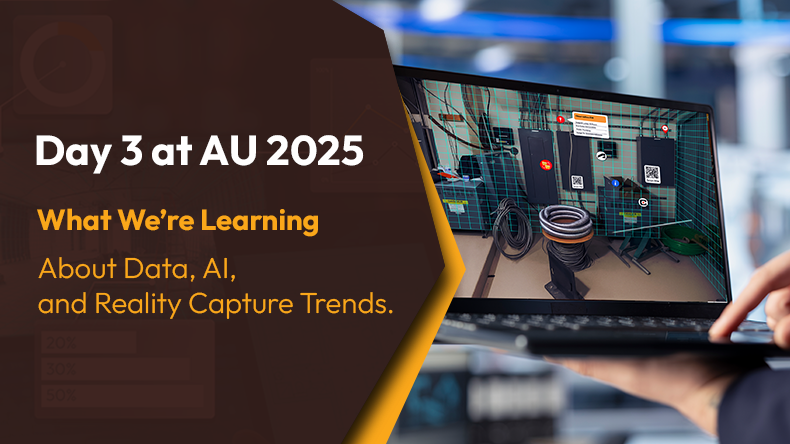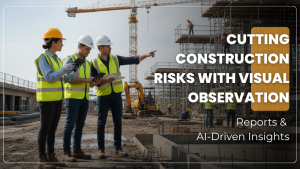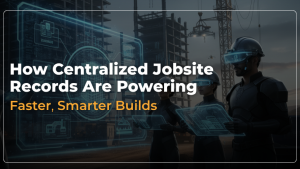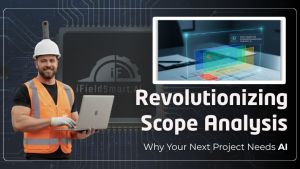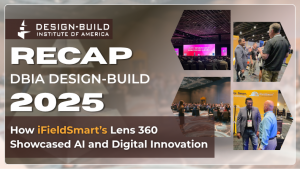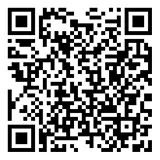Reading Time: 6 minutes
Introduction
For us at Lens360 powered by iFieldSmart AI, Day 3 proved that this isn’t theory—it’s the work we’re already doing with AI-driven reports, 360° photo documentation, and digital twins that keep the field and office on the same page. Across design, construction, and operations, these themes shape how teams work, share, and deliver.
Here are the key lessons and trends from AU 2025, and how firms are applying them in practice.
Work Smarter, Not Harder
iFieldSmart empowers your team with AI-driven efficiency to simplify scheduling, boost collaboration, and keep projects on track.
Schedule a MeetingBelow, we’ll explore the top lessons and trends from AU 2025, and how companies are applying them on the ground.
Connecting Data, Processes, and People in the Cloud
Autodesk is pushing the idea that project data must live in one cloud environment. No more files spread across Dropbox, Procore, BIM models, and ERP systems. When project managers, superintendents, and owners see different data, mistakes happen.
The cloud solves this by bringing design, construction, and operations data together. The result: faster updates, fewer disputes, and stronger teamwork.
At AU 2025, we showed how Lens360 pushes those captures straight into Autodesk Construction Cloud, Procore, or other systems teams already use. The point isn’t just storing files—it’s about giving everyone the same truth at the same time.
Everyone—PMs, supers, owners—sees the same insights at the same time. Cloud storage is not just about files; it’s about clarity, speed, and access for everyone.
Turning Data Into Decisions
Data only helps when it drives decisions. At AU 2025, dashboards and digital twins are front and center. Leaders need visuals that cut through clutter, not folders filled with images.
In construction, thousands of photos often sit unused. AI now reviews those captures and highlights issues, delays, or risks.
That’s why we built BI dashboards in Lens360. They turn site data into clear views of budgets, risks, and progress. Leaders don’t waste time digging—they see what’s on track and what needs fixing, right now.
This shift is huge. Instead of guessing or waiting for long reports, teams get insight in minutes. It’s data that speaks, not just data that sits.
AI in Action on the Jobsite
AI is not a preview of the future anymore—it’s working in the field today. At AU 2025, Autodesk highlights how AI is embedded into design and make workflows.
With Lens360, this is already happening. AI generates observation reports automatically, and field experts validate them so teams can act with confidence. It’s not hype—it’s how work gets done today. Punch lists, progress logs, and deviation checks happen automatically.
The payoff is time saved and better accuracy. Instead of digging through folders, teams ask the AI assistant simple questions: “Show me deviations in Level 2 mechanical room.” The answer comes back instantly, with evidence.
AI reduces admin work, lowers errors, and lets people focus on real decisions.
Building With Sustainability
Sustainability is not a luxury. Construction creates almost 40% of global emissions. Autodesk and its partners are showing how technology can reduce waste, save energy, and lower travel.
Lens360 adds to this by cutting rework through verified 360° documentation and AI reports. Every avoided mistake means less material wasted and a smaller carbon footprint.
AI reports catch quality issues early, avoiding rework and wasted materials. Digital closeout documents replace stacks of paper, cutting waste further.
The lesson: technology is not just about efficiency. It’s also about building responsibly for the planet.
The Rise of Industry Clouds and APS
Autodesk’s big move is the launch of its industry clouds: Forma for AEC, Fusion for design and manufacturing, Flow for media and entertainment. APS (Autodesk Platform Services) ties them all together.
Why does this matter? Because projects today are fragmented. Data falls through cracks between design, construction, and operations. Industry clouds close those gaps. APS ensures everything can connect.
That’s the role we play—turning raw field captures into verified data that syncs with Autodesk. Whether it’s validating a model or locking in as-builts, Lens360 keeps digital and physical aligned.
A 360° capture becomes a real-world check on the digital plan. Whether validating site feasibility in Forma or syncing as-builts into Fusion, reality capture keeps digital intent aligned with actual execution.
Connecting Autodesk SaaS With Enterprise Systems
It’s not enough to connect design and field data. Business systems like ERP and CRM also need a live feed of project reality.
AU 2025 highlights integrations between Autodesk Construction Cloud, Fusion, and enterprise platforms like SAP, Oracle, and Salesforce. This bridges the gap between project performance and business performance.
Reality capture plays a key role. Captured data and AI reports flow straight into dashboards used by executives and owners. Now they see real-time project truth inside the same systems they use for finance and planning. That’s powerful alignment between field, office, and boardroom.
Automating Workflows
Manual processes slow projects down. Capturing photos, sorting files, writing reports—it all takes time and introduces errors.
Automation is the fix, and AU 2025 puts it in the spotlight.
Lens360 takes that further—automated closeout packages, punch lists, and field reports that save hours every week. Teams don’t spend nights formatting PDFs. They walk away with answers ready to share.
Data flows into Procore, Autodesk Construction Cloud, or ERP systems without manual uploads.
Automation does more than save time. It ensures consistency. Every report looks the same across projects. Errors drop, trust rises, and teams get to focus on what really matters—building, not paperwork.
Digital Advantage as Business Advantage
The final theme is about business itself. Firms that adopt digital-first practices are winning bids, reducing disputes, and gaining repeat clients.
At AU 2025, the point is clear: technology is more than tools—it’s an advantage. Clients now expect transparency, digital records, and visible proof of progress. Firms using AI and reality capture meet those expectations.
Lens360 shows this advantage in action. Contractors finish projects faster, owners trust the records, and disputes fall. Firms that adopt early are not just efficient—they stand out in the market.
Three Takeaways
Looking at these themes, three lessons can be learnt:
- connect the data, let AI cut through the noise, and ground it all with reality capture. That’s how construction teams move faster and smarter.
- AI turns noise into clarity. From photos to reports, it makes data useful.
- Reality capture grounds the vision. It ensures digital models match real-world conditions.
Why AU 2025 Matters
Autodesk University is more than a showcase. It’s a signal of where the industry is heading. Cloud-connected data, AI-driven insights, and sustainable workflows are not side trends—they’re becoming the foundation of project delivery.
For construction teams, the message is simple. Firms can resist change and fall behind. Or they can use these tools to make faster decisions, smoother workflows, and gain a real market edge.
AU 2025 makes one thing clear: the future has arrived.
